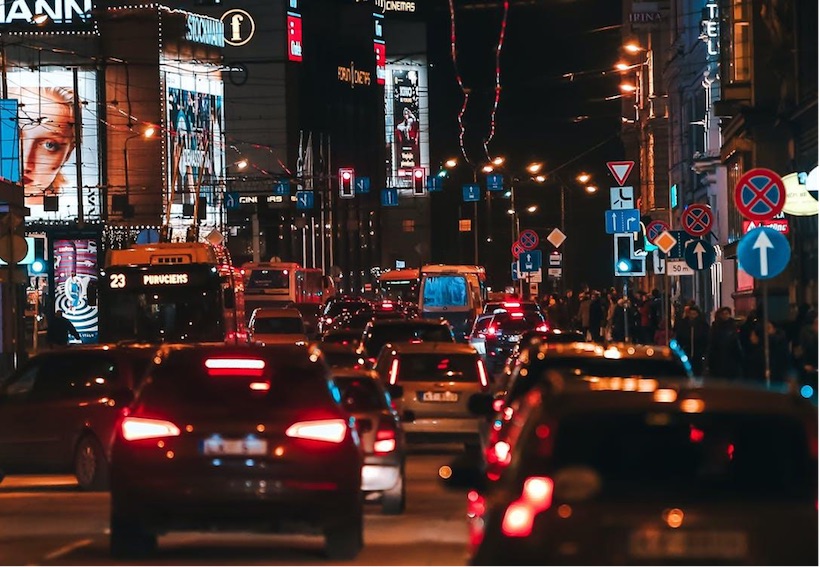Traffic Jams Cost U.S Cities: There is no news. A 2019 Global Traffic Scorecard analyzed andranked the impact of traffic congestionin over 975 cities in 43 countries across seven continents. Global Traffic Scorecard defined traffic jams as “the demand for road space exceeding supply,’’ and its economic impact is both challenging and prevalent. Most obviously, drivers with commuters suffer the most. Freight isn’t too far with either. According to the American Transportation Research Institute, the overall cost of congestion in the fright sector exceeds $ 74.1 billion annually, with $74.1 billion occurring in urban areas.
Obviously, when other indicators such as accidents and pollution are factored in, traffic jams can cost urban areas billions of dollars every year. Data shows that in the U.S, at least, drivers lost more than $88 billion due to logjams in 2019, with the average cost of each of them reaching $1,377. Cities like New York had the highest economic losses out of any major city in the U.S, with traffic jams costing it $11 billion last year.
Traffic Jams Cost U.S Cities
Is Traffic Congestion Problematic for the Economy?
Take Vancouver. They used traffic jams as a “stick and the SkyTrain as a carrot in such a way to discourage car use and make the city a better place to live.
Not long after occupying his position in 2019, Australia’s prime minister, Scott Morrison, selected a minister for “congestion-busting,” highlighting the importance he attaches to this problem. Massive Google search results on traffic jams in Australian cities (nearly 9.5 million) seem to back his opinion.
Advertisement
Content in this Article
But is this concern for traffic congestion based more on “groupthink” than a diligent look at the relevant data? What if this aching issue is not such a big social or economic problem? Are congestion costs overemphasized?
While pondering on these questions, it should be recognized that there is always an underlying need for driving, which surpasses the road space available, so creating more roads encourages more traffic. Traffic jams soon return, but with more cars affected than before.
In addition, traffic jams are likely to skyrocket with rising population and living standards. Not only that, but the congestion narrative is said to fuel the infrastructure turn, which means that there is an unnecessary focus on developing infrastructure, especially large transport infrastructure, rather than on transport planning and integrated strategic land use.
The infrastructure, as expected, is a simplistic response to growing city populations. Notably, it fails to accomplish travel demands towards a more sustainable long-term result. Emphasizing traffic jams and their estimated costs supports a sense that urgent action is needed and encourages the “infrastructure turn.”
Seattle-area Traffic – Worst in the Country as Study Shows
A new study reveals what irritated Seattle-area citizens already know: Traffic congestion in the Emerald City is a nightmare.
Local drivers in Seattle spent more time waiting in traffic than their equals in almost any other city, according to a 2019 study from Urban Mobility Report. Seattle is listed seventh on this list among large cities behind San Francisco, Los Angeles, Washington D.C; New York City; San Jose; Boston; and California.
Seattle congestion could be worse. The Washington State Department of Transportation and the city have taken some steps to keep Seattle from moving up in the rankings. Seattle is renowned for the incident’s response measures: the work as it relates to the monthly parking Seattle, speed, traffic management, or use of tolls.
The growing number of commuters sitting in the vehicles has a cost, both in wasted fuel and delay time. And, while those minutes don’t sound like much, they add up quite fast over a year. Ultimately, we’re talking billions of wasted hours and expenses of delay at an enormous scale. The report also breaks down traffic jams that happen during the week. The easy way is to stay off-road around 3 p.m. and 5 p.m. That’s when traffic is at its worst, particularly on Fridays at 4 p.m. Around that hour on that day accounts for 2.4 percent of Seattle’s delay, the most of any hour of the week.
The crazy hour during the morning commute is the 7 a.m. hour Monday through Wednesday. But weekends aren’t immune from the clogged roads either. Things do slow down on the highways between noon and 4 p.m. on Saturdays and Sundays.
To improve traffic congestion, we need more than just roads.
Traffic jams. An unfortunate fact of life and an outcome of booming economies and the increasing evolution of urbanization. By 2025, it’s expected that 70 percent of theworld’s population will live in urban areas.If we assume our roads are clogged right now, we haven’t seen anything yet.
There is, however, a solution to the traffic jams problem within the confines of the existing infrastructure. The answer to an aching dilemma? Location technology.
Implementing location software in highly populated urban areas can help diagnose a city and break down its mobility patterns. Congestion varies not only by when it occurs but where and how. There is an array of innovative, data-driven solutions that match the type of traffic congestion that appears and what sector of the city appears in. The key is to be comprehensive and take advantage of the network effects. With software at its core, these solutions are flexible over time. Not only that but using software solutions is way cheaper than building new roads.
What are these innovative solutions anyway?
HERE Technologies have identified five traffic management solutions to alleviate congestions, and each one is created for a different type of city: lanes in city centers, BRT (bus rapid transit), roundabouts just outside city centers, dynamic tolling at roads exit ramps into a city, park and rides at the edges of a city, and vehicle-based lane separation for roads that eventually lead to cities. Implementing a comprehensive approach that includes all five in is an efficient way to harmonize traffic throughout an urban area’s existing infrastructure.

